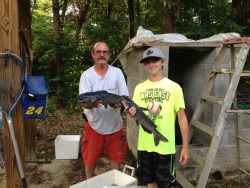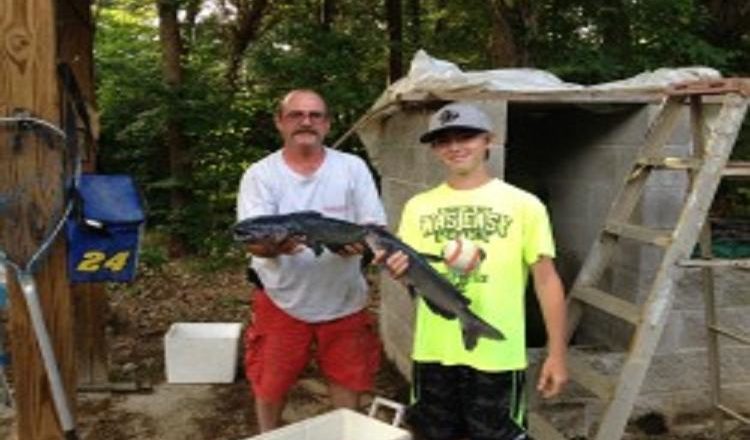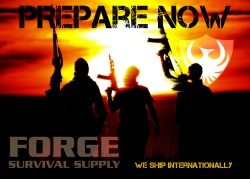 I recently read that “The future is where we will spend the rest of our lives.” Ponder that one for a few minutes. If you live in Colorado, you would maybe be headed to the local neighborhood pot store to get some encouragement for taking on any philosophical debates to discuss that statement. In Alabama it would take at least a couple six packs to prep the mind to rationalize the wisdom in that comment. Just kidding.
I recently read that “The future is where we will spend the rest of our lives.” Ponder that one for a few minutes. If you live in Colorado, you would maybe be headed to the local neighborhood pot store to get some encouragement for taking on any philosophical debates to discuss that statement. In Alabama it would take at least a couple six packs to prep the mind to rationalize the wisdom in that comment. Just kidding.
By Dr. John J. Woods, a contributing author to SHTFBlog & Survival Cache
In a ZITS cartoon strip this month the main teenage character Jeremy Duncan was saying to his bud Pierce, “Do you think about your future, Pierce?” He replies, “I try….but technically every second my future becomes my past.” Jeremy says, “So, it’s almost like you have no future.” Pierce answers back, “That’s what the guidance counselor keeps saying.” Humor aside though, truth is the future is inevitable, it is every second just ahead of us.
Also Read: SHTF Firearms Training
The question is serious though and remains one of the most critical a prepper needs to ask themselves. Exactly what kind of a future do you want for yourselves, family, or survival team in a post-SHTF environment? What level of existence or sustenance are you planning for? These are tough issues and even tougher to fulfill.
Try a Bit of Daydreaming
 An employee came into my office a while back as I sat in my chair with my feet up on the desk. She asked what I was doing. I told her “I am doing something you probably never do….I am thinking.” I mean, when was the last time you just sat quietly at your desk or in your recliner at home and just simply thought about things? Indeed, I propose to you that the concept of thinking is a dying art.
An employee came into my office a while back as I sat in my chair with my feet up on the desk. She asked what I was doing. I told her “I am doing something you probably never do….I am thinking.” I mean, when was the last time you just sat quietly at your desk or in your recliner at home and just simply thought about things? Indeed, I propose to you that the concept of thinking is a dying art.
Related: Prepper Monthly Checklist
When I do the thinking thing, I am never without a notepad nearby. At my age thoughts, concepts and ideas come and go like fireflies. If I don’t jot them down pretty quickly they will likely be gone forever. So don’t take any chances. As you think, ponder, and plan, make notes, lots of notes. Maintain a notebook, a folder, or a journal that compiles all your random thoughts and prepping ideas. This will surely become your blueprint. Add to it, take things away, but keep track of them.
This goes for watching television, listening to radio new or special interest programs or reading materials from other sources. You may hear parts and pieces of a good idea or thought so write it down. You can expand on it then or file it back for work later. This goes for related magazine or internet site information or ads including web site contacts to check later on.
Daydreaming is a good virtue for a prepper. It allows the brain free dimensional thinking. There should be no limits to your dreaming in terms of plans or aspirations. Always think positive about what you might be able to achieve or even for example afford to achieve. Dream big, work hard and most likely you will find that you can get there if strongly enough determined to succeed with your plans. It takes a lot of internal motivation to kick start any project and to keep it on track and running smoothly.
Conceive of a Post SHTF Life
 It’s true I tend to watch a lot of apocalypse movies or post-SHTF programming just to imagine a flavor for what a taste of the new reality might be like. I also watch shows such as Alaska Bush People just to get a mindset on the hardships that could arise from starting over. I try not to lose sight of the fact that film crews are just out of the camera view with the team eating fillets and lobster for dinner while the program characters crack another can of pork and beans. I don’t know if that is reality or not, but I have my suspicions.
It’s true I tend to watch a lot of apocalypse movies or post-SHTF programming just to imagine a flavor for what a taste of the new reality might be like. I also watch shows such as Alaska Bush People just to get a mindset on the hardships that could arise from starting over. I try not to lose sight of the fact that film crews are just out of the camera view with the team eating fillets and lobster for dinner while the program characters crack another can of pork and beans. I don’t know if that is reality or not, but I have my suspicions.
As a Bug In proponent, I try to frame my thoughts and plans on what resources I might have available after the storm. I went through Katrina both at home and work so I have a sense of how bad things can get, but frankly we had it pretty good. We continued to have city water service for drinking, cooking, bathing, and sanitation service. Natural gas continued to flow so we had hot water and a gas stove to use.
Book Review: How To Survive TEOTWAWKI
We did not have electricity for a week at the house and in the south in August it is really hot and humid. No AC, no ceiling fans, and no breeze. I don’t fare well in hot weather, so it was a test for me. Reality is how conditioned (or weakened) we have become to creature comforts. Post-SHTF we might never get electrical power again or for a really long time. Gasoline was in short supply and lines were long. My full tank of gas in the truck lasted me the entire week of the power outage. We had a second vehicle, but the family stayed home and did not travel. We had food stores sufficient for at least a month, so we did OK.
Based on all that I have tried to project ahead to planning for worse conditions. Despite no power, etc. we still preferred the relative comfort and security of our primary dwelling. I am just not a camping person, so my secondary cache locale is a hunting camp cabin an hour’s drive away. We could easily provision that Bug Out site, but by our standards it would be crude. However, it is a world away better than living out in the woods under a blue plastic tarp with very limited infrastructure. Can me (us) a whoos, but that is our reality. What is yours?
Practice Supply Side Economics
The elementary foundational keys to SHTF survival is planning, knowledge, supplies and practice. It is good if you can start a fire if need be with minimal effort, but you’ll need wood cut, stacked, or located. Oh, get those waterproof matches, and a bunch of butane lighters, too. Sure you can cook over open fires if you have pots, pans, and something to put into them and a ladle to get it out and a plate to put it on, then some utensils. Don’t forget the heat pad pot holder and a grill frame would be nice, too. See where I am going with this?
Related: The Ideal SHTF Bug Out Team
And sure there are a million other issues and things to take care of along the way. While the blueprint lays flat, it still guides you to build up something much more substantial for the long haul. Such is the flow of prepping. So, you have also to deal with food, water, cover, security, medical issues, sanitation, comfort, self and team protection, clothing, tools, carry and storage containers, radios, lighting, batteries, solar devices, transportation options, fuel, on and on. Basically prepping never ends, because you will always have some new skill to acquire and hone, new information to assimilate, additional gear to buy, and test out, plus hours upon hours of practicing all this under all kinds of simulated conditions. It’s enough to wear you out isn’t it? Just wait until a real SHTF event hits. The future is now, your future is now. Start visualizing it and planning for it.






